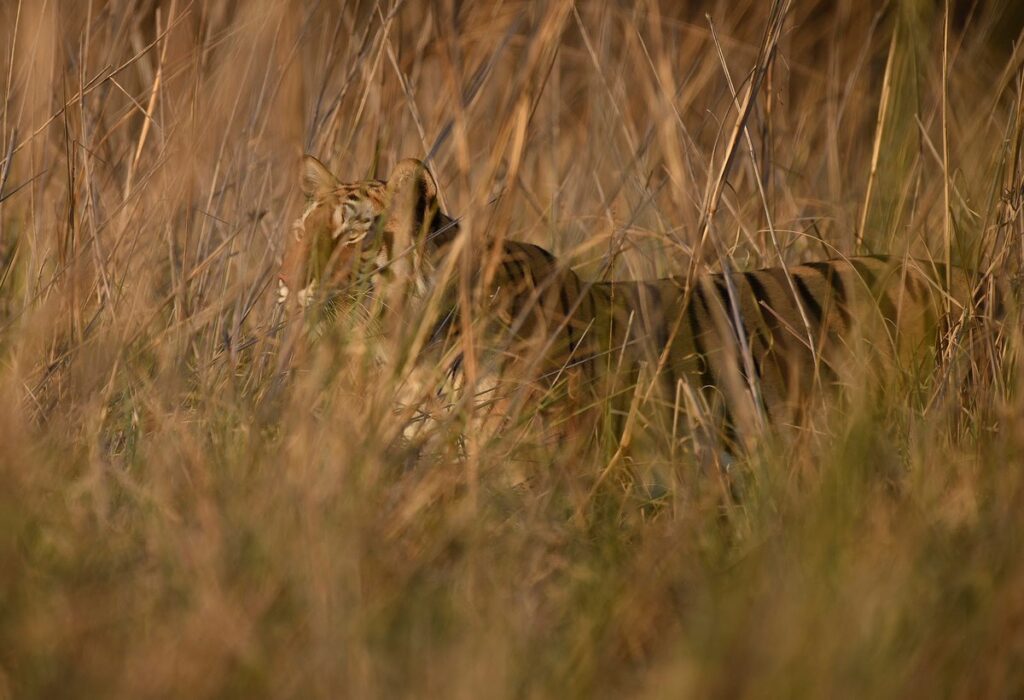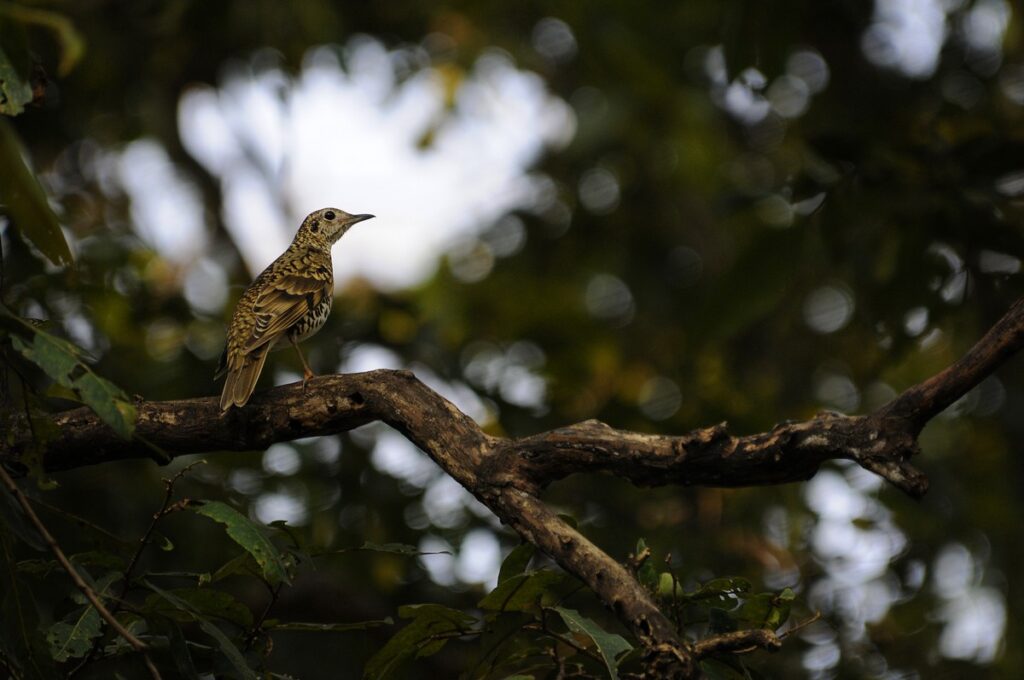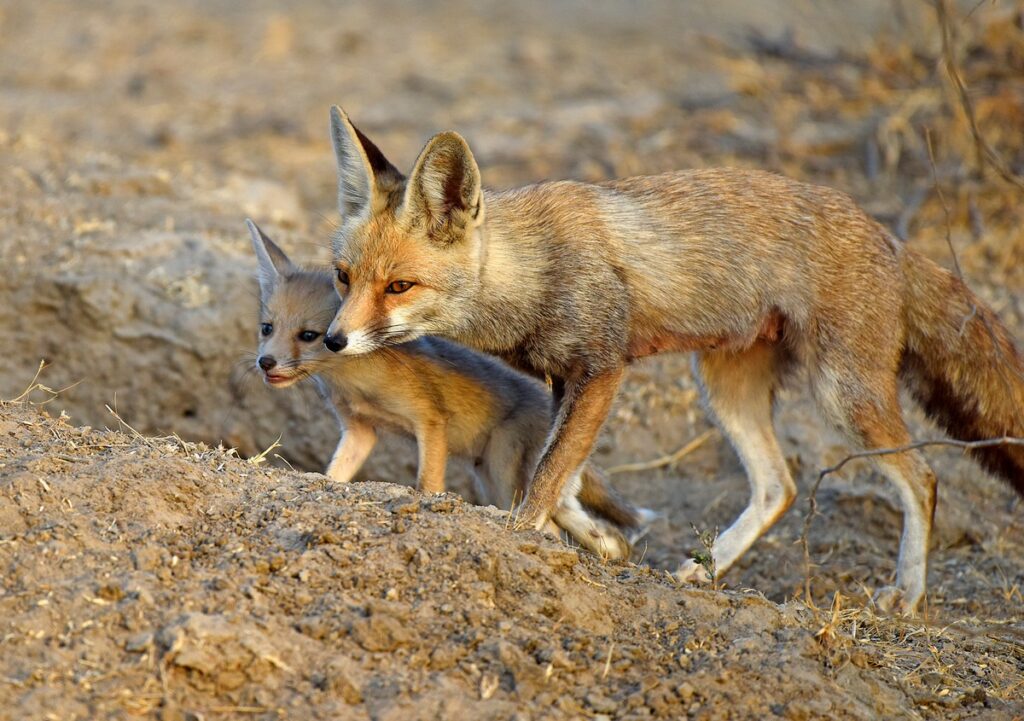In the real world, a world in which biodiversity and ecosystems need protecting by humans from humans, and I can’t stress this enough, for the very survival of us, humans, wildlife conservation has become a necessity. Yet, conservation is approached and perceived differently by different schools of thought. There are aspects to nature conservation that have been the subjects of intense debate among conservationists.
One such interesting matter of debate is that of the role of the so called ‘charismatic’ species in wildlife conservation.

Certain species, such as the Bengal tiger, that are regarded as “charismatic” are often heralded as the ambassadors of conservation endeavors ©Dr. Anish Andheria
What do conservationists mean when they say, for example, ‘protect the tiger, tiger corridors, tiger habitats, and all things tiger? Or what does it mean to regard the greater one-horned rhino as Kaziranga’s flagship species? Is it simply a biased conservation narrative favouring only a few, popular species? Think about it. The Government of India has over the years launched nation-wide conservation initiatives such as the Project Tiger and Project Elephant. But why hasn’t there been a Project Pangolin or Project Dugong?
Why are “charismatic species” heralded as the ambassadors and faces of conservation endeavors? There are perfectly good reasons behind choosing these ‘charismatic’ species to endorse wildlife conservation efforts. And there are perfectly valid concerns surrounding this approach.
Of all the terms used in conservation and management, such as focal species, flagship, keystone, umbrella, or indicator species, the term ‘charismatic species’ is perhaps least well-defined while being widely used.
What is charisma? One way of describing it would be “a compelling attractiveness or charm that inspires devotion in others”.
Humans can be drawn in by using qualities in people or animals that our anthropogenic brains discern as ‘charismatic’. Thus, the charismatic-species approach can be used as a conservation tool to arouse passion in masses to gain their support for conservation campaigns. Charismatic species can be depicted as symbols of conservation of a landscape, habitat, or related species. This can, in turn, help to raise funds for conservation projects and gain political support.
It is clearly impossible to monitor or study all biodiversity. Furthermore, there are human limitations to studying the mind-bending dynamics and interconnections within ecosystems in their entirety. This calls for practical objectives and measures. And one way that ecologists do this is by using proxies. A proxy species essentially represents a multitude of other species found in a similar habitat with overlapping requirements.

Protecting keystone or umbrella species effects the conservation of many other species that they share their habitat with. ©Dr. Anish Andheria
Generally, the species termed as charismatic are also the top predators in their habitats. Think big cats (such as the Bengal tiger in Asia) or the gray wolves (in North America or Europe). While some such as elephants and great apes literally shape their habitats. Elephants are often regarded as the “Gardeners of Eden” or ‘ecosystem engineers’ as their size and movement sculpt the forest vegetation. The large quantities of foliage that they consume every day, results in large quantities of precious poop which carries seeds far and wide, thus aiding in seed dispersal and plant regeneration! The nutrients in elephant dung attract insects and other wildlife that feed on it. Dung nutrients also seep into the soil acting as natural fertilisers!
We all know the now famous tale of how the reintroduction of gray wolves into the Yellowstone National Park of USA in 1995, after being driven to local extinction over a century ago, brought about cascading effects resulting in ecological recovery of Yellowstone.
Hence, heralding such charismatic animals as flagship species in conservation efforts, not only helps to protect them, but also their habitats and ecosystems, inevitably effecting the conservation of many other species that these animals share their habitat with. Thus, they are also often called as ‘umbrella species’.
These and other reasons lead conservation experts to believe that protecting the charismatic species is a smart way of protecting an entire ecosystem.
But there are critiques of this approach who regard it as unscientific and arbitrary.
One of the arguments they make is based on the heavy bias that has crept in, in the favour of the more charismatic species in scientific research, conservation policy, campaigns, etc. This distinction between charismatic and non-charismatic species, which is entirely subjective, has given rise to sort of a “class” struggle between the two groups, when it comes to conservation funding, programmes, and attention. And what of a particular landscape or habitat where no so-called ‘charismatic’ species exist? Are they doomed to our superficial attribution?
In 2022, a paper titled ‘Chasms in charismatic species research: Seventy years of carnivore science and its implications for conservation and policy in India’ was published. The paper reviewed a total of 1,792 studies on carnivores in India published between 1947 and 2020. They found that majority of the studies focused on felids (meaning wild cats) followed by other carnivore groups such as canids, mustelids, among others. Bengal tiger was the most studied species with nearly 25 percent of the reviewed studies focused on the striped cat, followed by the Indian leopard.
Girish Punjabi, a wildlife biologist with the Wildlife Conservation Trust and one of the authors on the aforementioned paper, writes, “Scientific knowledge contributed to litigation and formation of conservation policies for mostly large felids, the tiger being the most prominent. Common leopards and snow leopards were other felids for which national guidelines or trans-national policies have been put in place. Startlingly however, many habitats of neglected carnivores (such as hyenas, foxes, and wolves) are severely threatened yet categorised as wastelands in India.”
Punjabi further points out that the Government of India was among the top funding agencies that supported carnivore studies. Even international monies that came in from zoos, foundations, and other agencies were largely targeted at carnivore studies.

Habitats of neglected carnivores, such as foxes, are severely threatened, but receive little to no conservation attention. ©Dr. Anish Andheria
The bias towards the so-called charismatic species is evident in more ways than one.
Many experts also warn of the deceptiveness of single-species management as it tends to oversimplify the true complexity of ecosystem interactions. And not all endangered and charismatic animals are keystone or indicator species. This makes the previous argument of charismatic species embodying the larger cause of conservation of their habitat and food chain controversial.
Also, one person’s charismatic species, is other person’s cause for fear and struggles. Not all species which conservationists, researchers, donors, or organisations may find appealing, are necessarily popular among local communities. In a study published in the year 2000, perspectives of schoolchildren in Britain and Tanzania were assessed. When asked to name their favourite animals, British children preferred the traditional flagship species such as lions, apes, etc. While the Tanzanian children living close to protected areas harboured negative feelings towards those very animals.
While Bengal tigers, Asian elephants, and snow leopards are conservation priorities for many individuals, governments, and organisations around the world, the struggles of the local populations living in proximity to these animals are growing increasingly intense. Loss of lives on both sides, and loss of livelihoods and property are all too real for countless communities living close to protected natural habitats. Human-wildlife conflict is a serious and escalating conservation concern today.
All the overwhelming attention bestowed on charismatic species tends to push skewed and biased communication narratives around conservation and biodiversity, and even causes “flagship fatigue” due to repeated talk and mention of certain species, thus diluting the impact.
‘All animals are equal, but some are more equal than others’ – this line from George Orwell’s famous novella Animal Farm was used figuratively as a critique of human political systems but applies equally well to conservation politics today.
All said and done, people’s perception of biodiversity plays a crucial role in setting the narrative in conservation planning. And perceptions can change with improved communication, awareness, and knowledge dissemination to help people look at biodiversity through a rational rather than a purely emotional lens. No doubt that using species which people find charismatic to motivate and rally them is necessary. Because without funds and community support, conservation programmes would most certainly fail. However, there is a need to acknowledge the role played by so many “not-so-charismatic” species in stabilising ecosystems. And the onus of popularising them lies on conservationists, wildlife biologists, and nature communicators, who understand this fact all too well.
About the author:
Purva Variyar is a conservation and science writer and editor. She leads the WCT-Biodiversity, Ecosystems, and Endangered Species Grants Programme (WCT-BEES Grants) and heads the Communications vertical at the Wildlife Conservation Trust.
Disclaimer: The author is associated with Wildlife Conservation Trust. The views and opinions expressed in the article are her own and do not necessarily reflect the views and opinions of Wildlife Conservation Trust.
Your donations support our on-ground operations, helping us meet our conservation goals.
